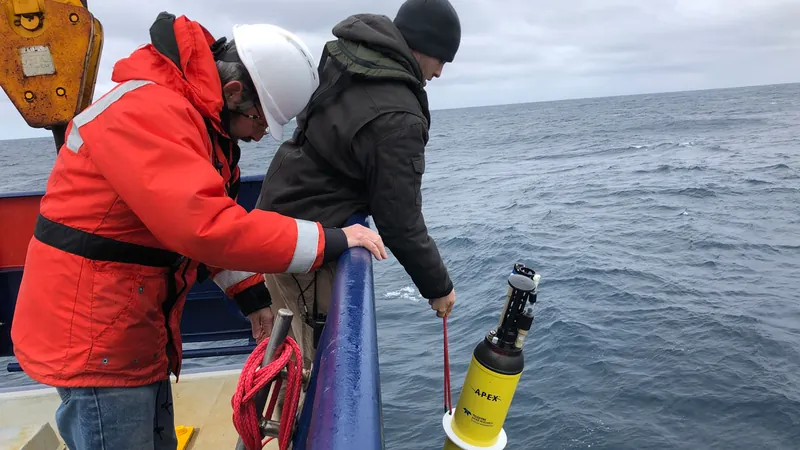
Groundbreaking Robotic Floats Reveal Secrets of Sinking Carbon in the Southern Ocean
2025-05-27
Author: John Tan
Unlocking the Mysteries of the Ocean's Carbon Cycle
Marine ecosystems are crucial to the Earth's carbon cycle, with tiny phytoplankton forming the backbone of the aquatic food web. These microscopic organisms absorb carbon dioxide from the atmosphere, transforming it into organic carbon. While a portion of this carbon eventually resurfaces into the air, another significant chunk is sequestered deep within the ocean through a process known as carbon export.
The Challenge of Monitoring Carbon Export
Understanding carbon export, particularly in the Southern Ocean—a pivotal area for global ocean circulation and a major carbon sink—has been an urgent task for scientists. However, gathering data in this region has proven tricky, especially in areas covered with sea ice, which are notoriously hard to access.
Innovative Technology Takes Center Stage
To tackle this challenge, scientists led by Liniger employed 212 cutting-edge autonomous floating instruments known as Biogeochemical-Argo (BGC-Argo) floats. These innovative devices can dive up to 2,000 meters below the ocean surface, glide beneath sea ice, and are equipped with advanced sensors to capture vital physical and biogeochemical data about seawater.
New Insights into Carbon Dynamics
Previous studies utilizing BGC-Argo data often limited their focus to narrow regions or specific timeframes, neglecting the ice-covered areas of the Southern Ocean. However, the latest analysis leverages data collected from 2014 to 2022 across the entire ocean basin, including crucial insights from beneath the ice. Employing a novel calculation method based on the floats’ measurements of sinking particulate organic carbon and shifts in dissolved oxygen, researchers estimate that a stunning 2.69 billion tons of carbon sink into the deep ocean annually in this region.
Variability in Carbon Export and Future Research Needs
The research also highlights that carbon export is not uniform across the Southern Ocean, with only about 8% occurring in seasonally ice-covered areas. As the effects of climate change continue to alter sea ice dynamics, further investigations into the active ecosystems within these regions are essential to fully understand their roles in the carbon cycle.
A Call to Action for Climate Science
This groundbreaking work not only enhances our comprehension of oceanic carbon dynamics but also emphasizes the urgent need for ongoing research in the face of our changing climate. The Southern Ocean, with its unique characteristics and crucial role in carbon sequestration, remains pivotal in the global fight against climate change.



 Brasil (PT)
Brasil (PT)
 Canada (EN)
Canada (EN)
 Chile (ES)
Chile (ES)
 Česko (CS)
Česko (CS)
 대한민국 (KO)
대한민국 (KO)
 España (ES)
España (ES)
 France (FR)
France (FR)
 Hong Kong (EN)
Hong Kong (EN)
 Italia (IT)
Italia (IT)
 日本 (JA)
日本 (JA)
 Magyarország (HU)
Magyarország (HU)
 Norge (NO)
Norge (NO)
 Polska (PL)
Polska (PL)
 Schweiz (DE)
Schweiz (DE)
 Singapore (EN)
Singapore (EN)
 Sverige (SV)
Sverige (SV)
 Suomi (FI)
Suomi (FI)
 Türkiye (TR)
Türkiye (TR)
 الإمارات العربية المتحدة (AR)
الإمارات العربية المتحدة (AR)